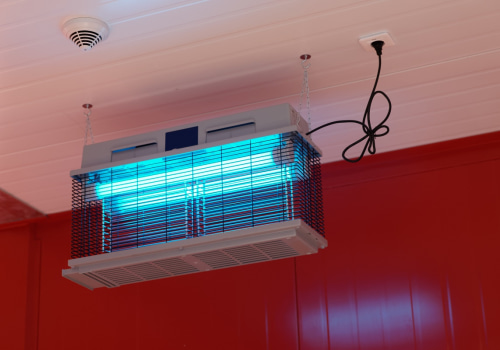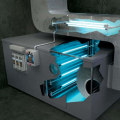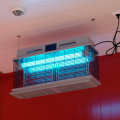The Comprehensive Guide to the Best Air Purifying House Plants for Homes with UV Light Installation
Think about bringing air-purifying plants into your UV-light-equipped home. Such plants not only beautify your living space but also play an essential role in absorbing toxins, contributing to humidity regulation. This helps to purify the air, improving its quality. Spider Plant, Snake Plant, and Peace Lily are among the best picks. These plants thrive under UV light and have air-purifying properties.
Every plant species has its unique UV light needs; hence, rotating and monitoring them regularly helps minimize exposure to potentially harmful UV rays. Understanding the specific needs of these plants will ensure their healthy growth, enabling them to purify your air effectively. Learn about the optimal caring methods for these plants in the following sections to enjoy the maximum benefits of their air purifying effects.
Key Takeaways
Air purifying houseplants, like Spider Plant, Snake Plant, Peace Lily, Boston Fern, and Aloe Vera, are beneficial due to their unique qualities.
UV light needs vary from plant to plant, ensure to research and understand each one for optimal growth as well as effective air purification.
Strategically positioning these green friends can ensure uniform UV light absorption; regular rotation is also recommended.
Closely observing your plants can help identify signs of UV damage; adjusting light intensity might be necessary.
Regular maintenance of your UV light system can prolong its efficiency and improve air purification outcomes.
Understanding UV Light and Houseplants
UV light is a type of electromagnetic radiation in sunlight and plays an important role in the growth of your interior plants. Knowing how it works with your greenery can increase their air-purifying capabilities. The light is not as difficult to comprehend as you may think. Your plants indoors absorb this UV light and use it in photosynthesis.
You may remember from school biology that photosynthesis is a process by which plants transform light energy into chemical energy. This energy allows them to grow and develop. Not all light is suitable for this process. Photosynthesis of plants demands effective light from the blue and red spectrum, inclusive of UV light.
Excessive UV light is hazardous to your plants because it can cause tissue damage and stunted growth. For this reason, it is always important to consider the amount of UV light your indoor plants are exposed to. Balance is key. Sufficient light will increase photosynthetic activity in your plant and enhance, at the same time, their air-purifying abilities. Thus, having basic knowledge about UV light and the process of photosynthesis is important in ensuring the health and effectiveness of your air-purifying indoor plants.
The Importance of Air Purifying Plants
Understanding UV light's influence on indoor plants paves the way to appreciate the significance of the best air-purifying houseplants. These unique flora serve as natural air purifiers, striving continuously to enhance your home's air quality.
Here's why you should think about incorporating these plants in your living space:
Purifying air: Toxins in the air find themselves absorbed by these plants, leading to cleaner, safer surroundings.
Health advantages: Studies on health benefits indicate potential relief for respiratory conditions and stress reduction.
Regulating humidity: These plants help maintain indoor humidity, curbing mold growth.
Visual charm: They lend your indoor space calming, inviting aesthetics.
Criteria for selecting plants: Think about factors such as light and humidity requirements, toxicity levels, and harmony with your home's decor during plant selection.
Incorporating air-purifying plants not only make your living space healthier but also contributes to its aesthetic appeal. Therefore, choosing just any plant isn't the smart way to go; careful selection based on criteria is essential for your health and well-being.
Top 10 Air Purifying Houseplants
Considering air-purifying houseplants for your dwelling? Here they are:
Spider Plant: Excellent for removal of toxins such as formaldehyde.
Snake Plant: Absorbs toxins via leaves while releasing oxygen.
Peace Lily: Helps to eliminate harmful toxins like ammonia.
Boston Fern: Acts as a natural humidifier for air.
Aloe Vera: Known for its healing properties, also excels in air purification.
English Ivy: Specializes in absorbing mold spores.
Rubber Plant: Removes toxins while purifying air.
Bamboo Palm: Adds moisture to the air while removing toxins.
Philodendron: Famous for removing formaldehyde.
Golden Pothos: Commended for purifying air from toxins.
When picking plants, consider your dwelling's specific requirements. Light needs, care levels, and aesthetic appeal are important factors. Be aware of toxicity issues though. For instance, Peace Lily, and English Ivy could be harmful if ingested by pets or children. Always research potential toxicity before introducing any plant into your dwelling.
Guide for UV Light Plant Care
For your air-purifying flora to flourish, understanding how to properly administer UV light is essential. This task might seem daunting but with a well-thought-out plant positioning strategy, you can optimize UV light benefits for your leafy companions.
Here's how to manage this task effectively:
First, recognize the types of UV light your plants prefer. Some flourish with UVA light, others with UVB.
Arrange your greenery according to their UV light needs. Those needing less UV light should be further from the light source.
Regular rotation of your plants ensures equal UV light absorption on all sides.
Keep an eye on your plants for signs of UV damage, such as bleached leaves or stunted growth.
Modify UV light intensity and exposure length based on your plant's individual needs.
Maximize Benefits of UV Light Installation
Upon UV light system establishment, aligning your plants properly is essential. Optimizing UV light usage plays an essential role in improving air purification mechanisms. Aim for equal UV light coverage over all your plants. This strategy enhances the impact of light on plants, leading to superior air purification results.
Consider energy-saving techniques. Many people believe UV lights require constant operation. However, you can conserve energy by switching the lights off when there's sufficient natural light. A timer can assist in providing a steady light regimen for your plants, avoiding unnecessary power consumption.
Maintenance of your UV light system is indispensable. Regular bulb cleaning and replacement when needed helps maintain peak performance. This practice not only optimizes your UV light benefits but also prolongs the system's longevity.
Frequently Asked Questions
What Are the Costs Associated With UV Light Installation for Houseplants?
Costs associated with UV light installation can vary. Factors influencing these costs include efficiency of the UV light as well as professional installation fees. Nonetheless, this investment tends to have a positive impact on growth of air-purifying houseplants.
Are There Any Harmful Effects of UV Light on Pets or Humans?
Indeed, certain precautions need considering when dealing with UV light. Exposure to UV light for extended periods might result in detrimental effects on both humans and pets. These consequences encompass harm to the skin, issues with eyes, or in more severe situations, development of skin cancer or cataracts.
How Often Should I Replace the UV Light Bulbs for Optimal Plant Growth?
Every half to full year, changing UV light bulbs ensures the best growth for your plants. Your foliage will appreciate the attention to bulb lifespan and light frequency, important aspects of their vitality.
Can I Use UV Light Installation for All Types of Houseplants?
Not all houseplants can flourish under UV light installation. Compatibility of each plant with UV light should be checked first. Certain plants prosper with specific UV light settings while others might struggle. Adjusting light settings to match each plant's needs is essential for promoting their healthy growth.
Is There a Difference in Plant Growth With Natural Sunlight Versus UV Light?
Indeed, a distinction exists between plant growth under natural sunlight and UV light. Sunlight provides all necessary wavelengths for photosynthesis, while UV light concentrates on specific ones. Certain plants experience enhanced growth with controlled exposure to UV light.
Learn more about HVAC Care from one of our HVAC solutions branches…
Filterbuy HVAC Solutions - West Palm Beach FL
1655 Palm Beach Lakes Blvd., Ste 1005 West Palm Beach, FL 33401
(561) 448-3760
https://maps.app.goo.gl/VarpgNZnxuPQuW8A7









